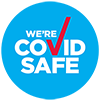What is Medical Waste?
Medical Waste consists of any waste generated in the diagnosis, treatment, or immunisation of human beings or animals but does not include any hazardous waste. Medical Waste is all waste materials generated at health care facilities, such as hospitals, clinics, physician’s offices, dental practices, blood banks, veterinary hospitals/clinics, and medical research facilities and laboratories. This definition includes, but is not limited to:
– Pathological waste: Tissues, organs, body parts, and body fluids removed during surgical
procedures, major surgery, and autopsy
– Human blood and blood products: Waste blood, serum, plasma, and blood products, including but not limited to blood-soaked bandages, discarded surgical gloves
– Contaminated sharps: Contaminated hypodermic needles, syringes, scalpel blades, surgical instruments, Pasteur pipettes, lancets, culture dishes and other glassware, and any broken glass.
– Cultures and stocks of infectious agents (microbiological waste): Specimens from medical and pathology laboratories. Includes culture dishes and devices used to transfer, inoculate, and mix. It also includes discarded live and attenuated vaccines.
– Animal waste: Contaminated animal waste, carcasses, body parts, and bedding.
- Pathological waste: Tissues, organs, body parts, and body fluids removed during surgical procedures, major surgery and autopsy
- Human blood and blood products: Waste blood, serum, plasma and blood products including but not limited to blood-soaked bandages, discarded surgical gloves
- Contaminated sharps: Contaminated hypodermic needles, syringes, scalpel blades and surgical instruments, Pasteur pipettes, lancets, culture dishes and other glassware and any broken glass.
- Cultures and stocks of infectious agents (microbiological waste): Specimens from medical and pathology laboratories. Includes culture dishes and devices used to transfer, inoculate, and mix. Also, includes discarded live and attenuated vaccines.
- Animal waste: Contaminated animal waste, carcases, body parts and bedding.


